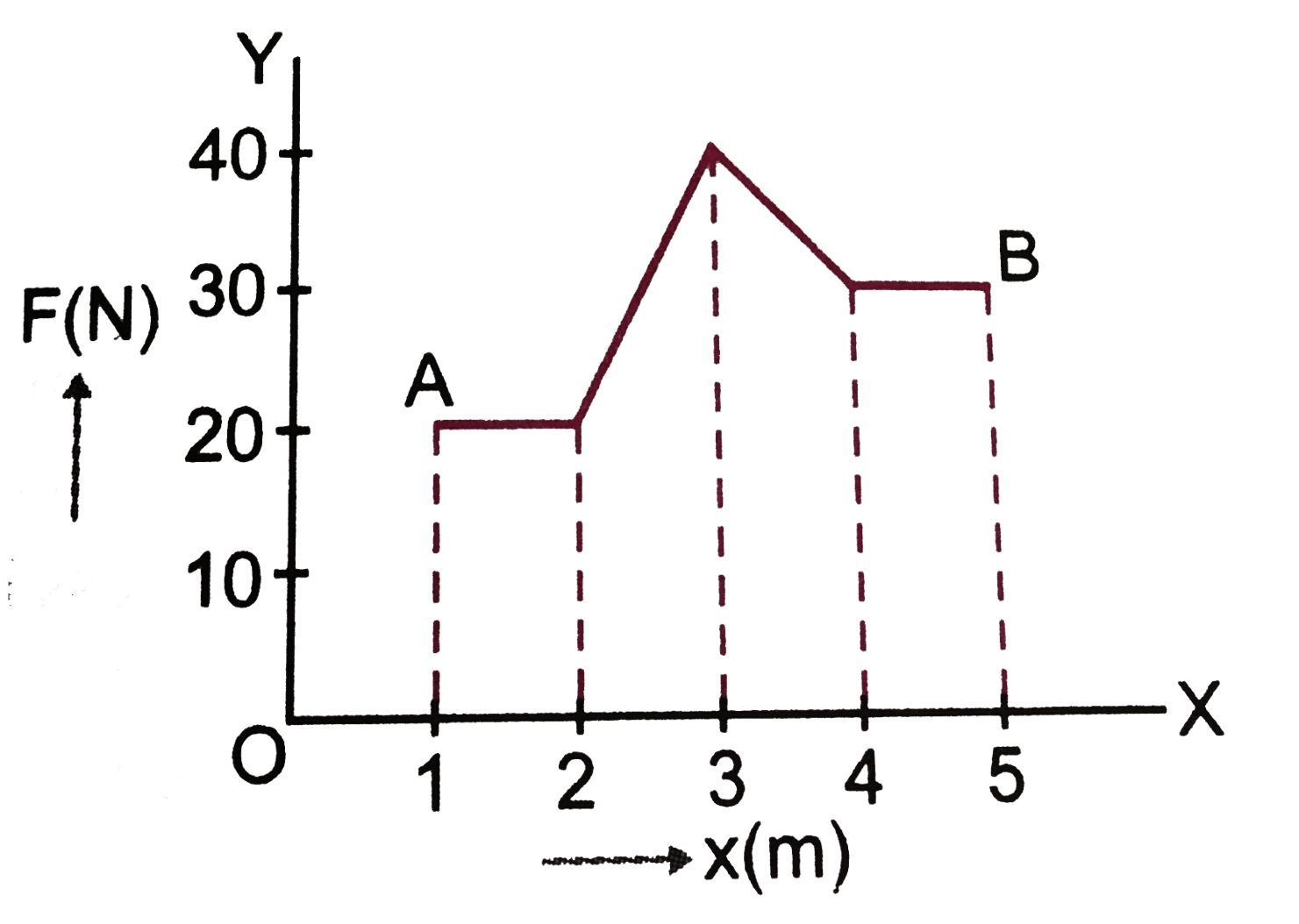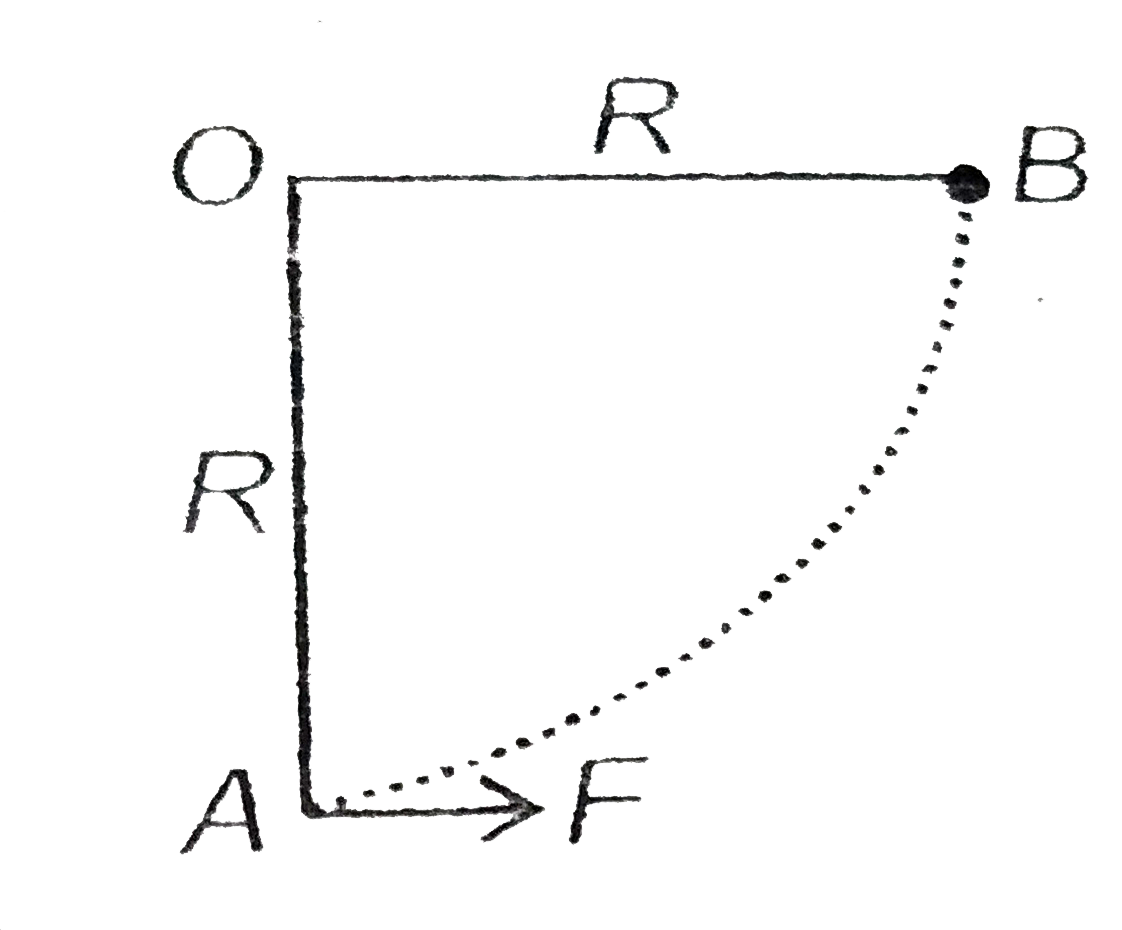Is it possible for a body to be in accelerated motion under the action of a force but still no work is done by the force? Cite an example in support of your answer.
To determine whether it is possible for a body to be in accelerated motion under the action of a force while no work is done by that force, we can analyze the relationship between force, displacement, and work.
1. Understanding Work Done:
Work done (W) by a force is defined as the product of the force (F) and the displacement (S) in the direction of the force. Mathematically, it is given by:
W=F⋅S⋅cos(θ)
where θ is the angle between the force and the displacement.
2. Condition for No Work Done:
For work to be zero, the angle θ must be 90 degrees (or π2 radians). This is because cos(90∘)=0. Thus, if the force is always perpendicular to the displacement, no work is done.
3. Example of Accelerated Motion with No Work Done:
A classic example of this scenario is Uniform Circular Motion. In this case, a body moves in a circular path at a constant speed.
4. Centripetal Force in Circular Motion:
In uniform circular motion, a centripetal force (Fc) acts towards the center of the circle, keeping the body in circular motion. The magnitude of this force is given by:
Fc=mv2r
where m is the mass of the body, v is its speed, and r is the radius of the circular path.
5. Direction of Force and Displacement:
At any point in the circular path, the displacement of the body is tangential to the circle, while the centripetal force is directed radially inward. Therefore, the angle between the centripetal force and the displacement is always 90 degrees.
6. Conclusion:
Since the centripetal force is always perpendicular to the displacement, the work done by the centripetal force is zero:
W=Fc⋅S⋅cos(90∘)=0
Despite the fact that the body is in accelerated motion (changing direction), no work is done by the centripetal force.
Final Answer:
Yes, it is possible for a body to be in accelerated motion under the action of a force while no work is done by that force. An example is a body undergoing uniform circular motion where the centripetal force is always perpendicular to the displacement.
Work done (W) by a force is defined as the product of the force (F) and the displacement (S) in the direction of the force. Mathematically, it is given by:
W=F⋅S⋅cos(θ)
where θ is the angle between the force and the displacement.
For work to be zero, the angle θ must be 90 degrees (or π2 radians). This is because cos(90∘)=0. Thus, if the force is always perpendicular to the displacement, no work is done.
A classic example of this scenario is Uniform Circular Motion. In this case, a body moves in a circular path at a constant speed.
In uniform circular motion, a centripetal force (Fc) acts towards the center of the circle, keeping the body in circular motion. The magnitude of this force is given by:
Fc=mv2r
where m is the mass of the body, v is its speed, and r is the radius of the circular path.
At any point in the circular path, the displacement of the body is tangential to the circle, while the centripetal force is directed radially inward. Therefore, the angle between the centripetal force and the displacement is always 90 degrees.
Since the centripetal force is always perpendicular to the displacement, the work done by the centripetal force is zero:
W=Fc⋅S⋅cos(90∘)=0
Despite the fact that the body is in accelerated motion (changing direction), no work is done by the centripetal force.
Yes, it is possible for a body to be in accelerated motion under the action of a force while no work is done by that force. An example is a body undergoing uniform circular motion where the centripetal force is always perpendicular to the displacement.
Topper's Solved these Questions
- BOOK - MODERN PUBLICATIONCHAPTER - WORK, ENERGY AND POWER EXERCISE - Tough & Tricky (PROBLEMS)15videos
WORK, ENERGY AND POWER
- BOOK - MODERN PUBLICATIONCHAPTER - WORK, ENERGY AND POWER EXERCISE - NCERT FILE (NCERT Textbook Exercise)23videos
WORK, ENERGY AND POWER
- BOOK - MODERN PUBLICATIONCHAPTER - WORK, ENERGY AND POWER EXERCISE - PRACTICE PROBLEMS27videos
WORK, ENERGY AND POWER
- BOOK - MODERN PUBLICATIONCHAPTER - WAVESEXERCISE - CHAPTER PRACTICE TEST14videos
WAVES
Similar Questions
Knowledge Check
- Question 1 - Select One
A body is inequibrium under the action of three coplanar forces, then
Athey must act in a straight lineBthey must meet in pointCtheir horizontal and vertical components must be equalDnone of these - Question 2 - Select One
Work done by a force in displacing a body is an example of
Avector productBscalar productCaddition of vectorsDdivision of vectors - Question 3 - Select One
A body under the action of several forces will have zero acceleration
AWhen the body is very lightBWhen the body is very heavyCWhen the body is a point bodyDWhen the vector sum of all the forces acting on it is zero
Is it possible that an object is in the state of accelerated motion due to external force acting on it, but no work is being done by the force. Explain it with as example.
View SolutionA body is in accelerated motion. Is it possible that no work is done ? Give some example.
View SolutionA charged particle is moving in a circular path under the action of the Lorentz force. How much work is done by the force in one revolution?
View SolutionA body moves from a point A to B under the action of a force shown in figure. What is the amount of work done ?
 View Solution
View SolutionIn Q.4. work done by tangential force on the body is
View Solution


